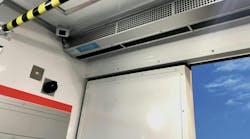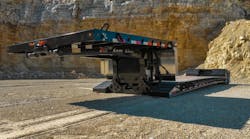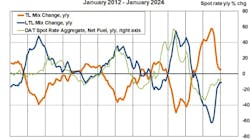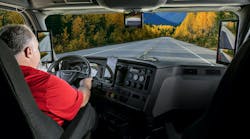DID you know that in 1903 there were only two automobiles in the entire state of Ohio? And yet, even with no other vehicles on the road, these two cars somehow managed to crash into one another.
Ever since we have had motor vehicles, motor vehicle safety has been an issue. It is a challenge that manufacturers have been working throughout the years to alleviate. Progress seems to be accelerating, as one technological advance builds upon the next.
Most of us tend to take these advancements for granted. Just slip behind the wheel of a car from the 1950s and notice how different the passenger compartment is from what we have gotten used to. No seatbelts keep you secured to your vinyl bench seat in the event of a collision. No shoulder harnesses. No airbags to stand between you and the steel dashboards or to protect you from slamming into radio control knobs shaped like bullets.
Less obvious are the advancements in windshield glass and the addition of crumple zones designed to enable the vehicle to absorb crash forces so that people inside didn’t have to. Not to mention the improvements in electrical systems, brake technology or tire compounds.
But all of these breakthroughs only address a fraction of the reasons why people are killed or injured in motor vehicle accidents—the equipment side of the equation. But according to police reports, far more injuries and fatalities are caused by driver error than equipment failure. While car, truck, and trailer manufacturers are building safer equipment, the jury remains out on drivers. It’s much easier to change our brake linings than it is our driving habits.
That’s why recent developments in self-driving motor vehicles are so encouraging.
Earlier this month the head of Google’s self-driving car project reported that the company’s fleet of approximately 20 cars has driven almost a million miles without input from human drivers. During that time, the cars have been involved in 11 accidents, none serious. According to Google, no accidents were caused by self-driving driver error.
But this technology also is catching on with the commercial truck industry. The Freightliner unit of Daimler Trucks North America drove that point home May 5-6 when it demonstrated its own autonomous truck at a special media event at the Las Vegas Motor Speedway.
The Freightliner Inspiration Truck essentially is a Freightliner Cascadia tractor, equipped with Daimler’s Highway Pilot control system—a convergence of multiple technologies into a package that the company acknowledges is still years away from being available for normal service.
Highway Pilot technology includes radar mounted on the front bumper, a stereo camera, along with the adaptive cruise control currently used in standard Freightliner Cascadia models and the Mercedes-Benz Actros.
“The autonomous vehicle technology we are showcasing will help reduce accidents, improve fuel consumption, cut highway congestion, and safeguard the environment,” said Wolfgang Bernhard, a member of the board of management of Daimler AG Daimler Trucks and Buses.
Much of the technology has been tested extensively in Europe, including the steering gear and the camera of the lane-keeping assist system. Testing of the front radar unit began in 2008 and has successfully completed more than two million miles in series production and in tests at Mercedes-Benz cars and Daimler Trucks.
At this point, the system is far from being a substitute for a driver. It is more like the autopilot in an airliner. As soon as the Freightliner Inspiration Truck is safely on the highway, the driver can activate the Highway Pilot system. The system does not initiate autonomous passing maneuvers, lane changes, or exiting the highway. And as of yet, hooking up a trailer is still up to the driver.
But engineers today are making major steps toward removing driver error tomorrow. They still have a long way to go, but even today’s technology probably would have helped those two cars in Ohio. ♦










